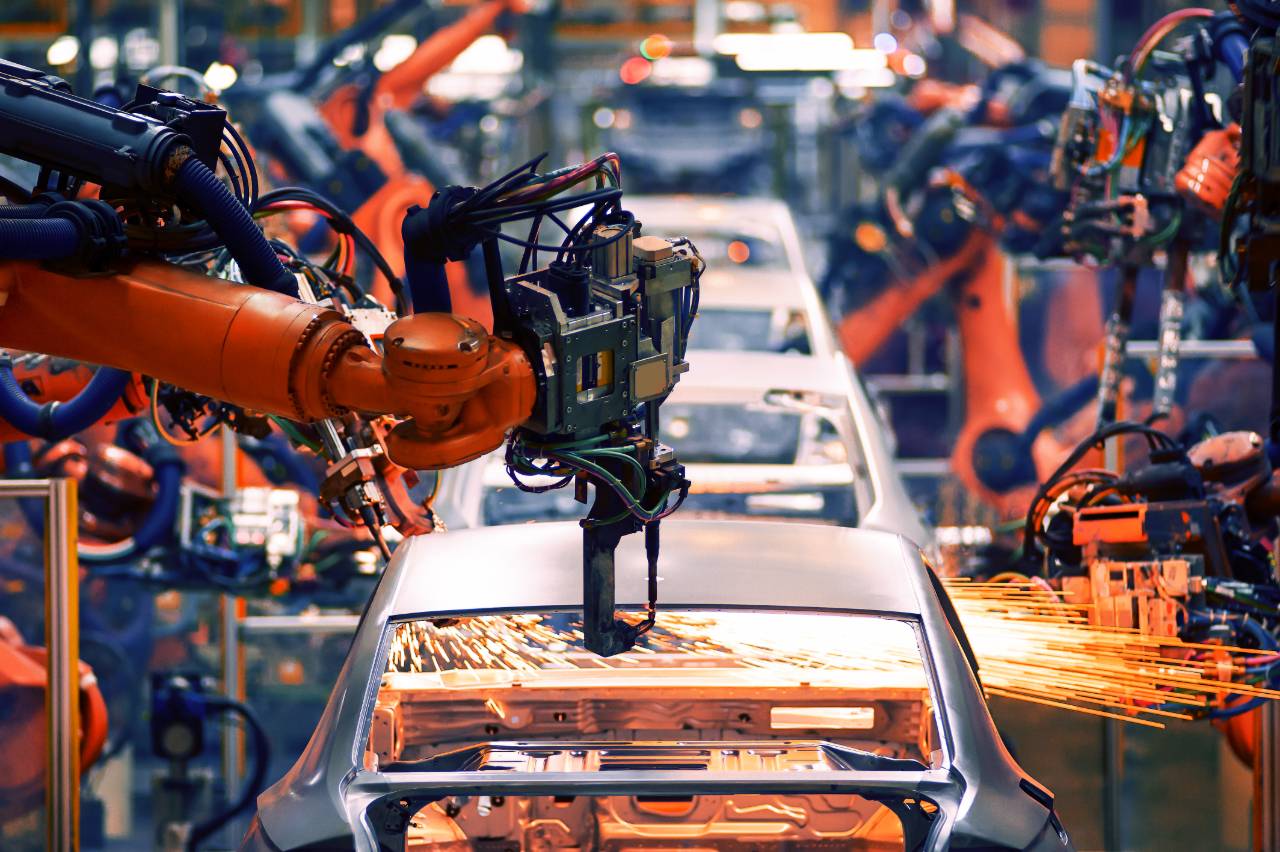

Businesses are adapting their strategies in response to the Covid-19 fallout.
Pre-pandemic, Industry 4.0 and its many technological advances was often cast under the umbrella of ‘nice to have’ as opposed to ‘essential to operations’. However, with capacity in factories lowered and disruptions to supply chains causing productivity slowdown, companies are now looking for innovative insurance policies.

Access deeper industry intelligence
Experience unmatched clarity with a single platform that combines unique data, AI, and human expertise.
Many of these take the form of technologies such as automated workforces and AI. As companies’ focuses shift from survival to recovery and then eventually establishing a ‘new normal’, decision makers are exploring how Industry 4.0’s capabilities could have reduced the impact Covid-19 had on their operations – and how to implement them into their future operations.
Time to embrace the tech
Alongside Industry 4.0, reshoring and protectionism are also prominent topics plaguing site-selectors in 2020. As businesses look to move factories or open new ones, the discussion has shifted from being mostly about cost to prioritising efficiency and resilience in the workforce.
Markus van Tilburg, managing director at Global Aldea, a site selection and foreign direct investment (FDI) specialist based in Berlin, agrees that technology capability is becoming more important in his job.
“[Before Covid-19] we already knew about most of the advanced technologies and that businesses were using them, but we will be using them more intensively now,” he says.

US Tariffs are shifting - will you react or anticipate?
Don’t let policy changes catch you off guard. Stay proactive with real-time data and expert analysis.
By GlobalDataVan Tilburg has also noticed a shift in attitude towards digital transformation, saying: “[Before Covid-19] lots of people did not believe in these tools, but they do now because the pandemic is proving that they work.”
Van Tilburg points out that some regions are already embracing Industry 4.0 at a high level in their manufacturing industries.
“In supply chains and production, some are already at a very high digital level with machines, robots, smart factories and implementing 5G into their production facilities,” he says. “It is already very, very connected, so that innovation is there to find. I believe we will see it move faster now because of the impact of Covid-19.”
Where are the innovators?
Before the pandemic, the World Intellectual Property Organisation launched its 2019 Global Innovation Index ranking the innovation performance of 129 economies around the world. The index considered school life expectancy, university rankings, market sophistication, level of ICT access, and political and operational stability among other factors. Switzerland, Sweden, the US, the Netherlands and the UK took the top five spots, respectively.
Furthermore, in 2018 The Economist Intelligence Unit released an Automation Readiness Index that stressed the importance of proactive and engaged governments in being key to success in this field. The index looked at three policy areas: innovation environment, labour market policies and education policies. Out of the 25 countries surveyed, South Korea, Germany, Singapore, Japan and Canada took the respective top five spots.
Head of automation at GSK Julie Huxley-Jones stated in the report that “the vast majority of countries are only starting to think about planning for the challenges of automation”.
Although this sentiment was shared before the onset of the pandemic, it is widely accepted that in order to fully embrace these innovative technologies, a skilled workforce is crucial to success.
The report stated an urgent need for engagement from government, industry, educational specialists and stakeholders if policy making is to keep pace with innovation in automation.
What about the workforce?
Although an automated workforce bolstered by AI is a popular solution to keep productivity levels high while factory capacities are low, there has been continual debate over whether an automated workforce will mean the loss of jobs on a large scale.
Stephen Phipson, CEO of Make UK, a body that represents British manufacturers, disagrees with this premise.
“Where we have seen factories installing automation, we have seen an increase in their employment numbers, not a decrease – this because they have employed differently skilled types of people,” he says. “They need different types of production engineers, coders, etc… So, it is about adding employment and looking for different qualities in staff to deliver much more productive factories.”
While talent remains of critical importance to digital transformation strategies, so do advanced manufacturing spaces. On 28 November, the Advanced Manufacturing Research Centre Cymru in Broughton, Wales, opened its doors. Costing £20m, the centre was designed to provide businesses with the capability to research, develop and access advanced manufacturing support.
The centre has 100 paying partners including UK giants Boeing, Rolls Royce and McLaren. Before Covid-19, the centre was predicted to increase gross value added to the Welsh economy by approximately £4bn over the next 20 years.
As recovery strategies from the Covid-19 pandemic emerge, van Tilburg agrees that developed industries and countries may be the most agile as the world enters into a new era of Industry 4.0.
“I think recovery and the speed of recovery now is what matters most and, of course, government support as companies try to stabilise,” he says. “This is where the developed industries and countries will have some advantage.”







